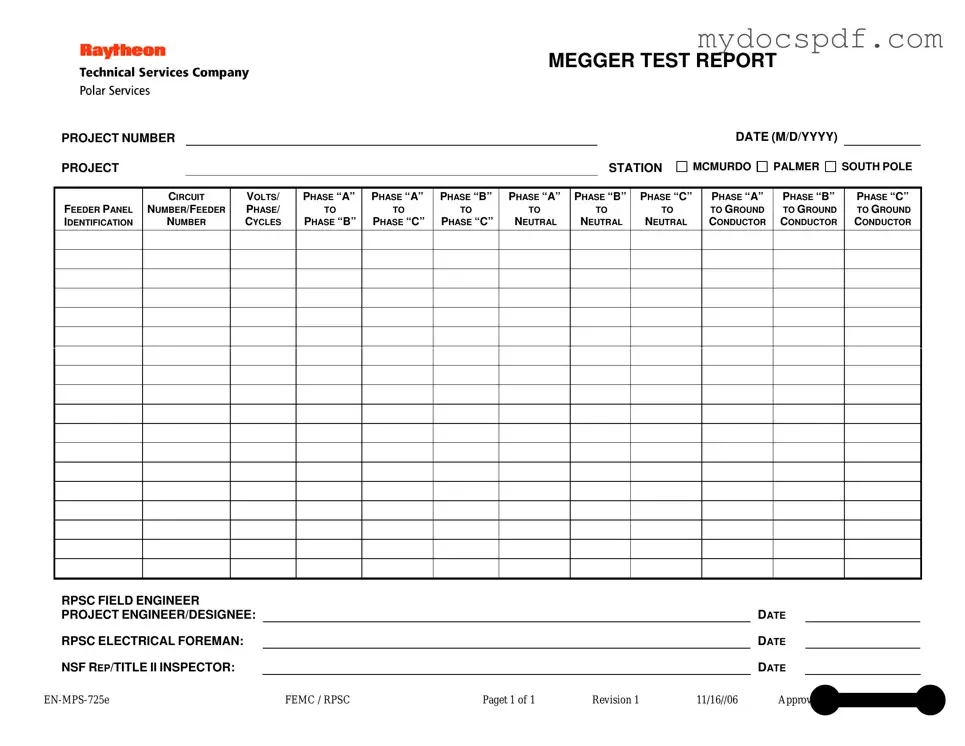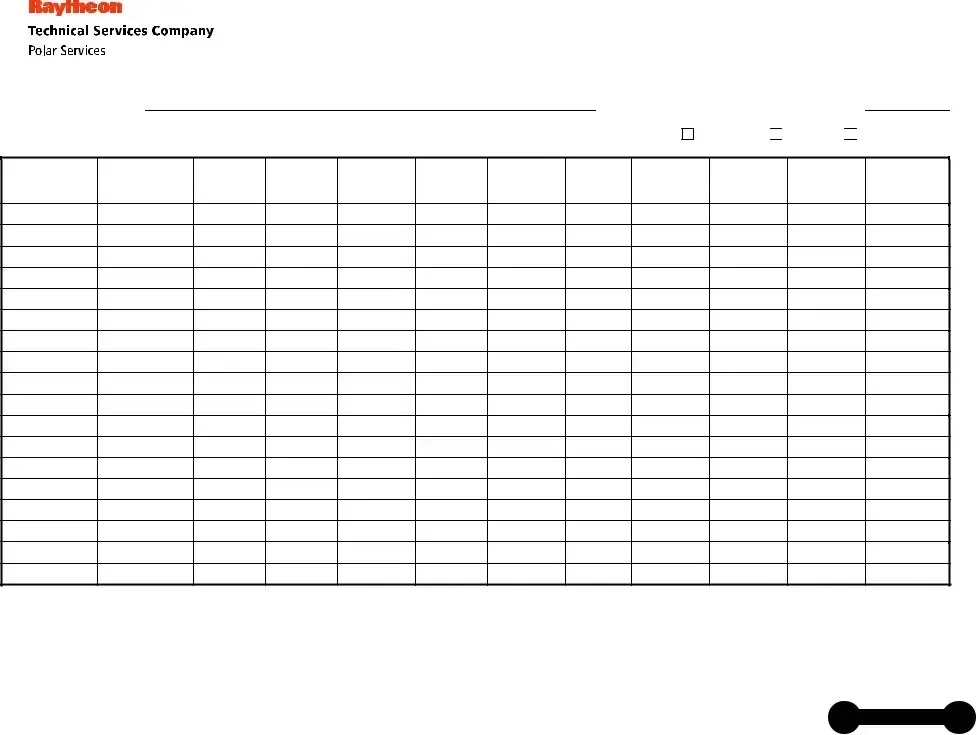The Megger Test form serves as an essential document for recording electrical insulation resistance test results, ensuring safety and reliability in electrical systems. This form includes critical details such as the project number, project station, and the date of the test, which help in tracking and referencing the testing process. It identifies various feeder panels and circuit numbers, providing a clear overview of the specific components under evaluation. Measurements are taken between different phases and between phases and neutral or ground, including phase-to-phase and phase-to-ground readings. The form also captures the names and signatures of key personnel involved in the testing, such as the RPSC field engineer, project engineer or designee, electrical foreman, and NSF representative or inspector. By documenting these aspects, the Megger Test form plays a vital role in ensuring compliance with safety standards and facilitating effective communication among team members throughout the project lifecycle.



 PALMER
PALMER 
 SOUTH POLE
SOUTH POLE